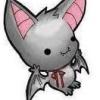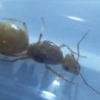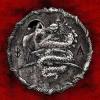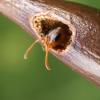- Formiculture.com
- Forums
- Gallery
- Members
- Member Map
- Chat
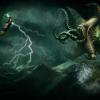
Vendayns Veromessor andrei journal (10-03-15)
Started By
Vendayn
, Oct 3 2015 11:20 AM
39 replies to this topic
#21
 Offline
-
Posted October 4 2015 - 10:07 AM
Offline
-
Posted October 4 2015 - 10:07 AM
Its the same size as a Pogonomyrmex queen. About the same shape too.
I'll try more pictures when I get home. But, my phone is having tons of issues. I think that is why pictures aren't coming out clearly. I can try my wifes tablet she has, but that will need to wait.
I'll try more pictures when I get home. But, my phone is having tons of issues. I think that is why pictures aren't coming out clearly. I can try my wifes tablet she has, but that will need to wait.
#22
 Offline
-
Posted October 4 2015 - 10:27 AM
Offline
-
Posted October 4 2015 - 10:27 AM
You should buy a macro lens for good pictues, lad. Mine was sort of cheap, and I love it ![]()
#23
 Offline
-
Posted October 4 2015 - 10:32 AM
Offline
-
Posted October 4 2015 - 10:32 AM
http://s4.photobucke.../Mobile Uploads
Fixed my phone. It's first three pictures.
And yeah, but no money. but maybe once we pay our debts. Also, I'm a big Blizzard fan.
but maybe once we pay our debts. Also, I'm a big Blizzard fan.
Fixed my phone. It's first three pictures.
And yeah, but no money.
#24
 Offline
-
Posted October 4 2015 - 10:50 AM
Offline
-
Posted October 4 2015 - 10:50 AM
Still can't really tell, but its starting to look like novomessor/apheanogastor. Is it super hairy btw? The veromessor andrei near my house are covered in hair, lol. I don't know what the queens look like though.
#25
 Offline
-
Posted October 4 2015 - 10:51 AM
Offline
-
Posted October 4 2015 - 10:51 AM
Yeah, they are super hairy.
#26
 Offline
-
Posted October 4 2015 - 11:07 AM
Offline
-
Posted October 4 2015 - 11:07 AM
Still not really good enough. I do not see any epinotal spines though which should be visible.
#27
 Offline
-
Posted October 4 2015 - 11:15 AM
Offline
-
Posted October 4 2015 - 11:15 AM
My phone might not be up to the task then.  that is best my phone can do. I do need an actual camera, but can't afford one right now.
that is best my phone can do. I do need an actual camera, but can't afford one right now.
The queen and worker get along well. I can try taking another picture, but of the worker. I don't think my camera is good enough, though. I don't want to keep bothering the queen.
The queen and worker get along well. I can try taking another picture, but of the worker. I don't think my camera is good enough, though. I don't want to keep bothering the queen.
#28
 Offline
-
Posted October 4 2015 - 11:21 AM
Offline
-
Posted October 4 2015 - 11:21 AM
Can I take a picture of their huge nests outside? I can get pictures of the workers that way. They make huge trails, carrying seeds and insects. Like I said, don't want to stress out the queen. I keep taking her out, and I don't want to keep doing that.
Edited by Vendayn, October 4 2015 - 11:22 AM.
#29
 Offline
-
Posted October 4 2015 - 2:32 PM
Offline
-
Posted October 4 2015 - 2:32 PM
Try shooting thru a magnifying glass.
- Foogoo likes this
#30
 Offline
-
Posted October 4 2015 - 4:05 PM
Offline
-
Posted October 4 2015 - 4:05 PM
This is really interesting and thanks for sharing the location. I'm going to try and head down there in a few weeks. Probably won't be queens anymore but I'd like to explore different areas with different species (and catch a few Solenopsis for C Carl).
Camponotus vicinus, Crematogaster 1, Crematogaster 2, Formica francoeuri, *, *, Myrmecocystus testaceus, Novomessor cockerelli, Pheidole hyatti, Pogonomyrmex californicus, Pogonomyrmex rugosus, Solenopsis invicta
#31
 Offline
-
Posted October 4 2015 - 5:18 PM
Offline
-
Posted October 4 2015 - 5:18 PM
Looks like a small Pogonomyrmex rugosus queen... Or maybe P.colei?
#32
 Offline
-
Posted October 4 2015 - 5:35 PM
Offline
-
Posted October 4 2015 - 5:35 PM
Is that area more like chaparral similar to the Santa Ana mountains, or more of a desert scrub like the Temecula Valley? My brother lives in Menifee, and there I see both V. andrei and P. rugosus, V. andrei in the more chaparral areas, and P. rugosus in the more deserty areas.
#33
 Offline
-
Posted October 4 2015 - 5:56 PM
Offline
-
Posted October 4 2015 - 5:56 PM
It's a bit of a weird area. It's irrigated by the houses and school. In the middle where the trail is and down to the road, I'd say it's almost like penesquitos canyon where I used to live. A ton of grass and very low lying plants, and sort of between dry and sort of wet. Maybe partly the runoff, but the soil holds water very well. But, just dry enough to not support Argentine ants.
It's weird because of the irrigation around.
It's weird because of the irrigation around.
#34
 Offline
-
Posted October 4 2015 - 5:58 PM
Offline
-
Posted October 4 2015 - 5:58 PM
It's a bit of a weird area. It's irrigated by the houses and school. In the middle where the trail is and down to the road, I'd say it's almost like penesquitos canyon where I used to live. A ton of grass and very low lying plants, and sort of between dry and sort of wet. Maybe partly the runoff, but the soil holds water very well. But, just dry enough to not support Argentine ants.
It's weird because of the irrigation around.
In other words, chaparral.
Current Species:
Camponotus fragilis
Novomessor cockerelli
Pogonomyrmex montanus
Pogonomyrmex rugosus
Manica bradleyi
#35
 Offline
-
Posted October 4 2015 - 6:15 PM
Offline
-
Posted October 4 2015 - 6:15 PM
Guess so, lol. Sorry, wasn't sure exactly best word for it. Thanks. 
#36
 Offline
-
Posted October 5 2015 - 5:29 AM
Offline
-
Posted October 5 2015 - 5:29 AM
It's a bit of a weird area. It's irrigated by the houses and school. In the middle where the trail is and down to the road, I'd say it's almost like penesquitos canyon where I used to live. A ton of grass and very low lying plants, and sort of between dry and sort of wet. Maybe partly the runoff, but the soil holds water very well. But, just dry enough to not support Argentine ants.
It's weird because of the irrigation around.
In other words, chaparral.
Haha exactly what I thought. I doubt you would find P. rugosus there, so that's probably eliminated. I can't think of what else it could be other than V. andrei. after looking at that picture, assuming it's the size of a Pogonomyrmex queen as he says. I almost want to go down there, but I don't know about digging up queens in a chaparral area; you would probably need a jack hammer.
#37
 Offline
-
Posted October 5 2015 - 9:41 AM
Offline
-
Posted October 5 2015 - 9:41 AM
I wonder why they flew so late in the year. It is VERY late judging by the ant mating chart. I know Drywood termites flew unusally long. This year was the first year I saw them fly for over a month (every day for about 30 days, usually they stop entirely after two weeks). And then Forelius pruinosus/mccooki have male alates, which is really really weird. Weirder than finding a Veromessor queen. They have alates usually in the Spring or Summer from what I've seen. No idea why they'd have alates this late in the year, when Forelius are a hot climate species.
Edited by Vendayn, October 5 2015 - 9:41 AM.
#38
 Offline
-
Posted October 5 2015 - 9:51 AM
Offline
-
Posted October 5 2015 - 9:51 AM
I have seen colonies that fly early in the summer dump their remaining alates this late in the year. When I collected any of them, they were never fertile.
#39
 Offline
-
Posted October 5 2015 - 9:53 AM
Offline
-
Posted October 5 2015 - 9:53 AM
Ah, I wonder if that will be the case with my queen. That would be a shame if that ended up happening. ![]()
(edit: But, I did find male alates in one nest. Maybe by luck she'll be mated with.)
Edited by Vendayn, October 5 2015 - 9:54 AM.
#40
 Offline
-
Posted October 6 2015 - 11:25 AM
Offline
-
Posted October 6 2015 - 11:25 AM
They probably died.
A huge thick trail of Argentine ants chewed through the paper lid and were swarming inside the container. So, that is that.
A huge thick trail of Argentine ants chewed through the paper lid and were swarming inside the container. So, that is that.
Edited by Vendayn, October 6 2015 - 11:28 AM.
1 user(s) are reading this topic
0 members, 1 guests, 0 anonymous users




